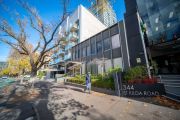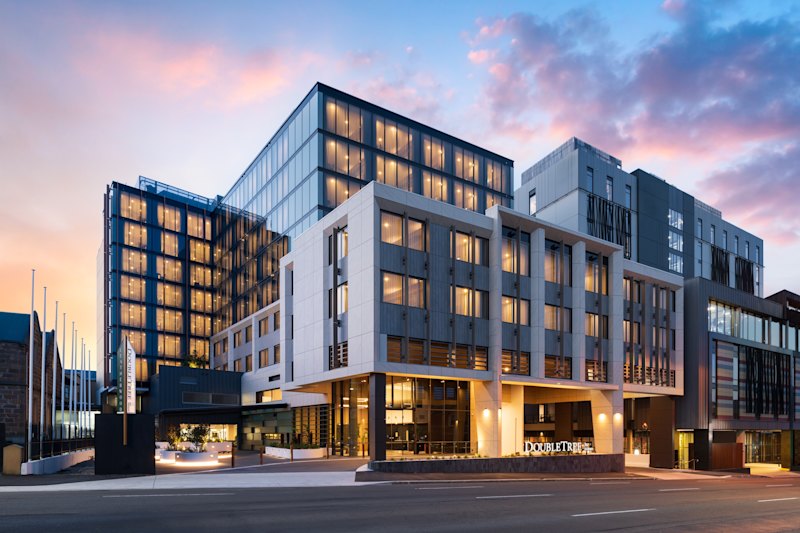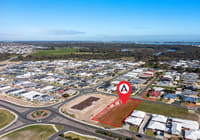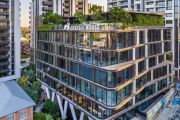
Earnings growth question hangs over property stocks
For the next three weeks, as the property stocks report, listed real estate in Australia goes under the microscope.
Valuations are stabilising, interest rates are coming down, and property stock prices have been rising.

What analysts and investors now want is earnings growth.
“I am upbeat,” says Grant Berry, a director and portfolio manager at SG Hiscock & Company.
“The valuations are supportive, and the building blocks are in place for good, medium-term growth.
“We see opportunities in the mid-cap to small-cap stocks, which offer high quality real estate, and an outlook for reasonable earnings growth, but are trading at a discount to asset backing.”
It is not a universal view. Others would view the stabilisation of valuations as tentative and certainly yet to be believed by the wider investment community.
Several stocks, like Lendlease, also face specific challenges.
Overall the sector is not cheap, with a price-earnings ratio about 20 per cent above the long-term average.
Macquarie Equity Research analyst Callum Bramah argues in a recent note that the Australian real estate investment trust (AREIT) sector is trading at a premium to most long-run average investment metrics except price to net tangible assets (NTA).
And he questions the NTA because the valuations underlying the figure are based on “capitalisation rate spreads to real bond yields below long-term averages” and a “low ” number of direct real estate transactions.
Of course few equity sectors look cheap at the moment, with the graphic showing how the AREITs have followed the broader market higher.
The good news for the AREITs is that the income growth is coming.
Most analysts expect 5 per cent plus earnings growth in the current financial year, and 6 per cent plus in the 2027 financial year.
Pete Davidson, Pendal Group’s head of listed property, says the earnings growth outlook is one of the best ever for the AREIT sector.
“Retail will show good earnings growth; industrial rent growth will be slowing but still positive; office will show flat earnings but at least valuations will be holding,” he says.
“Balance sheets are in good shape, gearing should be flat, and interest cost headwinds should be abating.”
UBS analyst Tom Bodor says the improvement in earnings will be driven by continued rate cuts and the roll-off of finance hedging.
“Further upside could emerge should a more dovish rate cut path lead to increased acquisition and development momentum across the sector,” he says.
“We are optimistic on the macro point in the cycle for AREITs given the strong rent growth outlook, rates trending lower and limited supply.”
But he warned that high expectations for stocks like Goodman, Stockland, Mirvac and Vicinity – and the specific challenges faced by stocks like Lendlease and Dexus – could temper the market reaction as results are released.
Like Hiscock’s Berry, Bodor sees near-term opportunity in the “oft overlooked mid-cap passive AREITs” as “interest rate cuts prove an inflection point and lift the growth outlook, operational challenges and risks are more easily identified and expectations are lower”.
Resolution Capital chief investment officer Andrew Parsons expects a “reasonably constructive” reporting season, with a watch on Melbourne.
“There is some confirmation, albeit based on still depressed transaction volumes that commercial real estate values have troughed and that interest rate headwinds are now largely absorbed,” he says.
He will be watching an office sector “still plagued by elevated incentives, particularly in Melbourne”, as well as “some signs of meaningful deceleration in industrial rents”, again particularly in Victoria’s capital.
And he will keep an eye on the residential transaction volumes in a subdued low affordability environment with ongoing development cost pressures.
“Otherwise the REITs are in tidy shape in terms of balance sheet/capital needs and positive rent reversions in most sectors,” Parsons says.
Those residential transaction volumes, and their development margins, will be closely watched both in the housing sector and emerging land lease operations.
“The Victorian market is improving but across most other markets affordability will be a stretch,” says Pendal’s Davidson.
Two smaller housing stocks, Peet Ltd and Cedar Woods Properties, have both guided investors to “strong” profit growth in 2024-25, with more to come in 2025-26. Both have delivered strong price growth in the past three months.
Stockland upgraded its 2024-25 distribution by 2.4 per cent, helped along by the acquisition of the Lendlease master planned communities portfolio.
Mirvac reported “positive momentum” at its March quarter update, with an 80 per cent rise in residential compared to March 2024.
But momentum takes time to flow through to bottom line. Weakness from past years dropped Mirvac’s full-year distribution in FY25 by 14 per cent.
Macquarie Equity Research’s Bramah says that the guidance given for 2026 and beyond will drive a divergence in performance “as some AREITs return to growth, while others continue to face headwinds”.
In particular, he notes that “interest rate hedging will be a significant contributor to the divergence in earnings growth outlook” for the 2025-26 year, with only some groups expecting their debt cost to fall.
Similarly, Pendal’s Davidson says “the key drivers for most AREITs will be their earnings quality and the accompanying outlook statements”.
On Tuesday, global real estate giant CBRE released its best second quarter result, in what many will hope is a pointer to the recovery in commercial real estate.
Global leasing was up 14 per cent, and US sales rose 25 per cent, pushing net income up by 65 per cent.
Australia is more subdued, but CBRE’s head of research in the Pacific, Sameer Chopra, says local transaction volumes rose 13 per cent in the first half of the year and the latest valuations for premium real estate, driven by rent growth, might surprise on the upside.
“The drag in the sector could come from higher outgoings such as land taxes, rates an insurance,” he warns.
Robert Harley is a former Financial Review property editor. He is at rob@rharley.com.au











